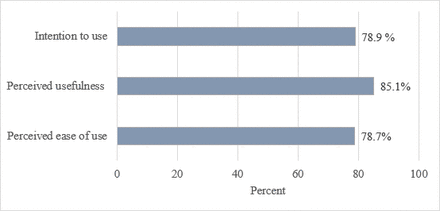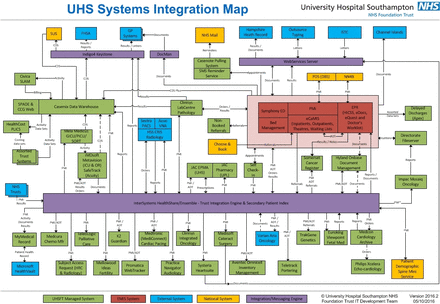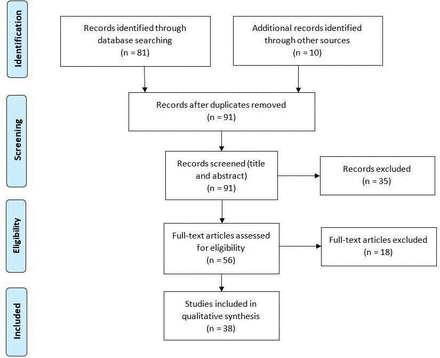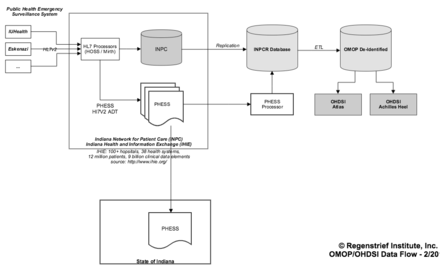Discussion
The findings of this study showed that mothers have a high intention to use mobile phone text message reminders for their child’s vaccination. Mother’s age, educational status, duration of mobile phone use, perceived ease of use and perceived usefulness were significantly associated with intention of mothers to use mobile phone-based text message reminders for vaccination. Mothers preferred to receive mobile phone-based text messages one day before the due date of vaccination and in Amharic (national) language.
This study indicated that the majority of mothers have intentions to use text message reminders for child vaccination. This finding corroborated findings from a study in Lagos Nigeria.57 A willingness study on pregnant women in Gondar city also reported consistent findings where around three-fourths of women were willing to receive text messages.11 However, this finding was slightly higher than a finding from another study in Nigeria.41 On the other hand, this finding is lower than a study finding from Kenya.8 The difference might be due to the difference in the information communication technology infrastructure and investment in digitalisation across countries.
In this study, the educational status of mothers was positively associated with their intention to use mobile phone-based text message reminders for child vaccination. This finding is in accordance with other studies.5 44 57–59 This may be explained by the fact that educated women are likely to be aware of incoming text messages and are likely to read and act on the received messages promptly. Evidence also showed that literacy status was shown to be an issue in text message reminder system implementation that has to be addressed when text message reminder system is being planned for implementation.25 A potential drawback to implementing a mobile-phone-based text messaging intervention is that it requires the recipient to have a mobile phone and an adequate level of literacy, marginalising some population groups who could potentially benefit from the mHealth intervention.21 In our study population, this could affect around 14% of women having no formal education.
The study also found that perceived usefulness has a positive significant association with intention of mothers to use text message reminders for child vaccination. This finding is consistent with other studies where users who did not believe in the possible advantages of e-Health were less inclined to use e-Health.58–61 End-users need to perceive the system as being useful or they will not attempt to use it regardless of how easy or difficult it is to use. Therefore, during system development, there is a need to ensure that the system will improve the intended health outcomes.25 62
The findings also showed that perceived ease of use was positively associated with intention of mothers to use text message reminders for child vaccination. This finding corroborates with the findings of other studies.54 58–60 When users have no or little previous experience of using a system, they usually pay more attention to the system’s ease of use. This implies that users would be unwilling to use a new mHealth service regardless of how useful the system would be if they perceive it to be difficult to use. Research also showed that users will stop using mHealth interventions that are not user friendly.54 Difficulty in using a new system could be solved if the user thinks that the system will be useful to them. One study reported that training users on the new mobile health technology improves perceived ease of use and, thereby, increases intention to use the actual system.54 Hence, deployment of mHealth initiatives may require extra guidance on how to operate and use the new system for improved implementation.25 62
Mobile services are mainly designed for individual users, who may have different expectations and needs in accordance with their preferences. To develop an effective text message reminder system for vaccination, parental preferences must be fully understood and taken into consideration before deployment.34 In this study, more than half of mothers would like to receive the text message reminders in Amharic (national) language. This finding is consistent with evidence from India.26 On the contrary, from studies in Nigeria7 44 57 majority of the mothers preferred English language for reminders on their mobile phones which could be attributed to their high literacy levels.
For successful implementation of mHealth programmes, clients should be able to choose when and how frequently they would receive text messages.21 The findings of this study indicated that the majority of mothers preferred to receive one text message reminder per each vaccination appointment. The optimal timing most preferred by mothers for receiving the text message reminders is the day preceding the vaccination appointment date which corroborates the findings in other studies.5 41 57 This might be because sending text messages to mothers 1 day before their vaccination appointments will increase the chances of the messages being seen and help them to get prepared for their child vaccination appointments ahead of time.
This study also showed that marital status, mother’s occupation, household wealth index and type of current mobile phone were not found to have a significant association with intention of mothers’ to use mobile text messages for child vaccination. In another study, it was also reported that the type of mobile phone did not have a significant association with intention to use SMS reminders.11 Thus, the type of mobile phone the mother had and the differences in economic status would not be a major challenge for implementing text message reminder interventions for child vaccination. Though it did not have a significant effect in another study,11 the variable place of residence has been removed from the final model due to its multicollinearity effect.
Implications for practice and research
This study has practical implications in particular for immunisation programme managers. Given the high proportion of mothers who had intention to use mobile phone-based text message reminders for vaccination, incorporating mobile text messages is a promising avenue to strengthen the routine immunisation programme in Ethiopia. If designed appropriately by considering user’s preference in terms of frequency, timing and language; text message-based mHealth interventions may be an innovative way for engaging users in care for improved child vaccination outcomes. The study also provides a basis for further interventional studies that can develop and assess the effectiveness of mobile text messaging interventions as a tool to improve the routine immunisation programme in Ethiopia.
Limitations
The findings of this study should be interpreted in light of some limitations. First, we studied intention for text message-based appointment reminder for those who already had a mobile phone and visiting vaccination units of health facilities in northwest Ethiopia. So, the findings may not be generalisable to the population of the entire country particularly for those residing in rural areas.
As most mHealth programmes focus on those with mobile phones, a potential drawback to the use of mobile phone-based text-message-reminders is the potential marginalisation of certain populations, such as those that do not have a mobile phone. However, these limitations may be reduced as mobile technology advances and mobile subscriptions grow in developing countries. This study also did not address the ecological and systemic barriers to implementation beyond user’s intention to use the technology which demand further research.





